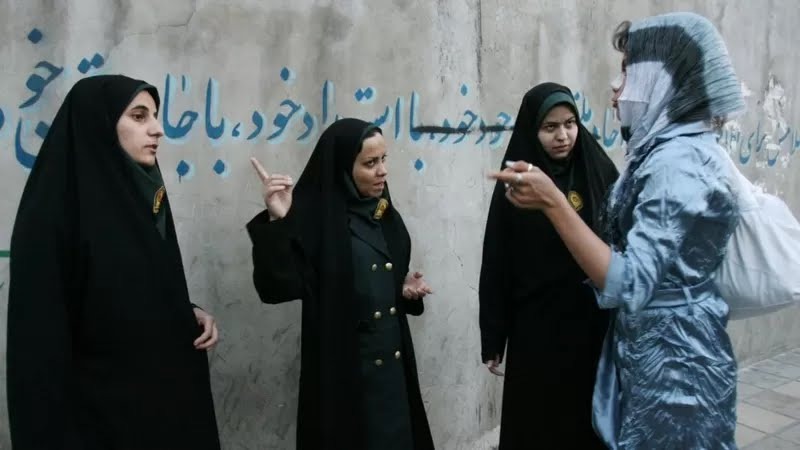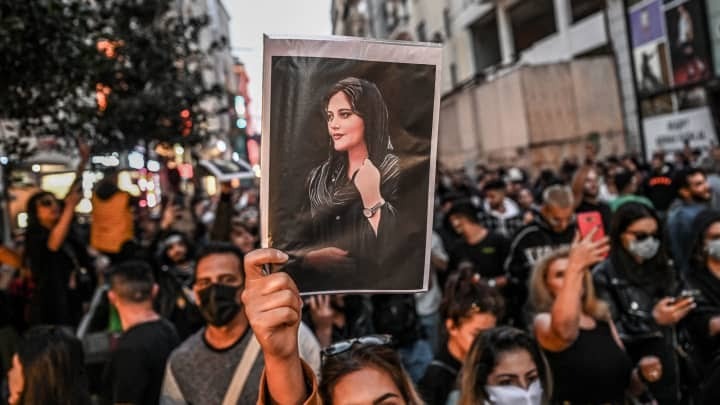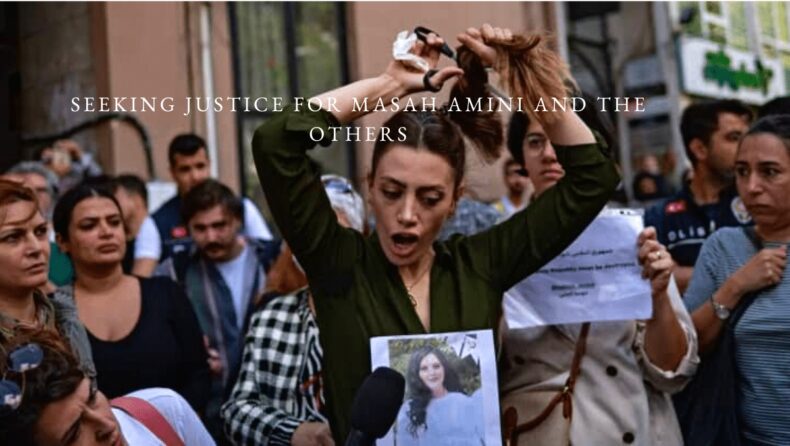The dissent and defiance against the authoritative government go on to unsettle Iran, as protests persist for the sixth consecutive day and people continue to storm against the regime’s tyranny.
To curb and deter the nationwide protests, Iran suspended internet services in the country, leaving thousands of Iranians disconnected from the world. As police brutality and illegitimate use of force continue with the violent crackdowns for the sixth consecutive day, at least 31 deaths have been estimated by Iran Rights (an Oslo-based non-government group).
The protests have reached a point of no return, and questions of liberty and violation of fundamental rights ignited a whole lot of resentment against the current regime’s autocratic rule. Provoked by the custodial death of a 22-year-old Kurdish woman Mahsa Amini, the wrath against the country’s moral police that controls women’s bodies and curbs their autonomy has been rising.
Iran: Protests against the Oppression of Women evolve into defiance against the Autocracy’s control of freedom

The suspension of the internet has infuriated an already incited population and the defiance against the harsh and authoritarian regulations has only intensified. The burning questions of personal liberty and independence have erupted underlining how the regime has transcended the boundary between personal and public.
Thousands have taken over to the streets in Iran as the protests against the custodial death of Mahsa Amini dissipated across 30 towns. Mahsa Amini has become a symbol for thousands of Iranian women who are oppressed under the social and religious frameworks of the country, morally policed and violated as they are denied rights that people elsewhere rightfully claim.
Since then, thousands of women and students have torched their headscarves at Keshavarz Boulevard, a popular location for anti-government demonstrations in solidarity with women who face oppression throughout the nation and to demand justice for Mahsa. Violent crackdowns and police brutalities in addition to tear gas, batons and rubber bullets have not dissuaded the crowds, and the slogan– ‘Hijab is a symbol of oppression,’ continues to echo throughout the country.

The 40,000,000 women and girls in Iran are all under the “morality” police’s or Gasht-e Ershad’s constant watch. These law enforcers sanctioned by the government, drive throughout the town and have the authority to stop ladies and scrutinise their clothing, meticulously examining how many hair strands are exposed, the lengths of their overcoats and pants, and the quantity of makeup they are wearing.

Living under perpetual moral policing with relatively no autonomy, enduring the regime’s imposition of religious and social restrictions, and violations of their fundamental rights, the plight of women can’t be poorer. In Iran, where the government tightly regulates women’s bodies and freedom is conceptual, this injustice is the truth for thousands of women and girls.
However, the state is not the only institution that polices the bodies of women. The oppressive, discriminatory, and degrading compulsory veiling rules in Iran have given thugs, vigilantes, and state agents who believe it is their duty and right to uphold Islamic Republic ideals the opportunity to harass and attack women in public. Thousands of women have untold stories of their harsh encounters with those who endorse these values and transgressed the ambiguous boundaries of choice and coercion.
Since the 1979 Iranian revolution, women in Iran are required to adhere to the hijab code. Iranian women had had to abide by the regulations for more than 40 years, or face imprisonment.
President Ebrahim Raisi had previously announced the implementation of both the hijab as well as chastity laws, that mandate that women cover one‘s shoulders and necks in addition to their heads.

“I call it the Talibanisation of the Iranian society. Iranian girls are educated and we won’t back down. We always dressed modestly, but this new order has just unleashed a new hell on our women. We will burn this regime down, along with our hijabs.”
In an interview with the Quint, Nergis, a resident of Tehran has parallelled paralleled the same emotion that is surging across the country.
Iran: The Defiance against the Autocracy, And The Fight for the Fundamental Rights

The protest that started against the unjustifiable death of Amini and the government’s oppressive regime, has now become a demonstration for millions of Iranians to attain their fundamental human rights and dignity that have been repudiated all this while.
Iran has seen an increase in the number of women and girls defying and resisting individually and collectively the country’s mandatory hijab legislation during the past several years. They broadcast films of themselves going down the streets with their hair showing, while discreetly swinging their headscarves on the tips of sticks as they stand in public spaces.
In protests, women have frequently had a significant impact. The tale of suppression is also one of resistance. And many people think that policing women’s bodies is an integral element of the regime’s political agenda, and the hijab is an instrument the regime has rigorously weaponized to curtail women’s rights.
Criminalising and persecuting those who choose not to wear the hijab, is incredibly discriminatory and oppressive. Forcing and pressing thousands of women against their will infringes their fundamental rights, including the freedom of speech, the right to privacy, and the right to equality.

“Today we stand with the brave citizens and the brave women of Iran who right now are demonstrating to secure their basic rights.”
US President Joe Biden pledged solidarity with Iranian women on Wednesday during his speech at the United Nations.
These laws deprive women of their right to choose, which is the fundamental essence of freedom. When it comes to the issue of hijab, it is something that is not inherently oppressive. The larger issue at stake here is the question of choice and coercion, autonomy and control, and of where the ‘Self’ belongs in the political limbo of the private and the public.
A quest to attain fundamental rights and liberties fuels the persisting protests in Iran and they have reached a point of no return; the autocracy is now witnessing the anticipated breakdown of the enraged masses. As voices of dissent amplify and reverberate louder than ever, making the ground beneath their feet ripple, how much longer will the unjustifiable autocracy be able to hold on?













